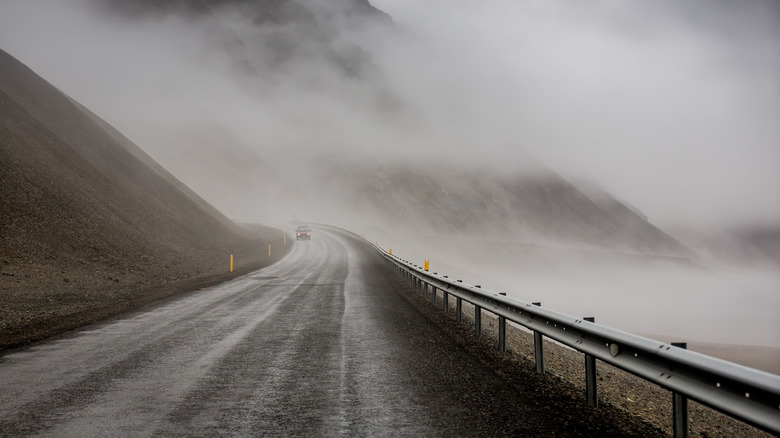Looney Tunes tried its best to prepare us for two things: quicksand and mirages. While the first is hardly the struggle once sold to Saturday morning cartoon viewers, almost all of us have seen a mirage. You just might not have known it at the time.
I’ve explained optical illusions in driving before, like why a cell phone can see the road better than you during bad weather, so I thought I might as well tackle the most common of all driving illusions, the mirage — and I’m not talking about the surge in sales for Mitsubishi’s Mirage. Light is a tricky little guy. How it reacts and how our brains perceive it all depends on what the light is traveling through. When a road spends all day baking in the sun, it throws off a tremendous amount of heat even after the air around it has started to cool. This heat causes air molecules to spread out making the hot air thin and trapping it under a layer of thicker, cooler air on top.
When light hits the cooler, more moist air, it actually slows the speed of light down. When it hits the hotter air, it speeds up and refracts, or changes direction. This creates what the science hippies call “an inversion layer.” Light rays that would normally hit the road and bounce straight back to your eye, showing you a stretch of asphalt, ends up curving upwards instead, scattering the light your eye receives. The effect is similar to how light is scattered on the surface of water, which is why it produces the shimmering effect.
Convention connection
Such an inversion layer is temporary, as hot air, being lighter than cold, rises and cools through a circular process known as convection. The road heat creates a microclimate that feeds on sunlight. Like any system in physics, everything wants to move to a lower-energy state — in this case, losing heat energy. The air closest to the Earth therefore rapidly cools at ground level as heat dissipates into the cooler air layer above, which is why you only see mirages after long hot, sunny days as the road cools quickly, and sunlight is needed to create the effect.
Alternatively, an inversion layer effect more often happens in reverse — with hot air on top of cold air — on a much grander scale. If denser, high-pressure cold air becomes trapped near the ground under a layer of warm air, water in the air forms droplets that turn into fog and mist. This is why mist forms on bodies of water, as they are rapidly losing heat, creating a trapped layer of cold, moist air under warm air.


